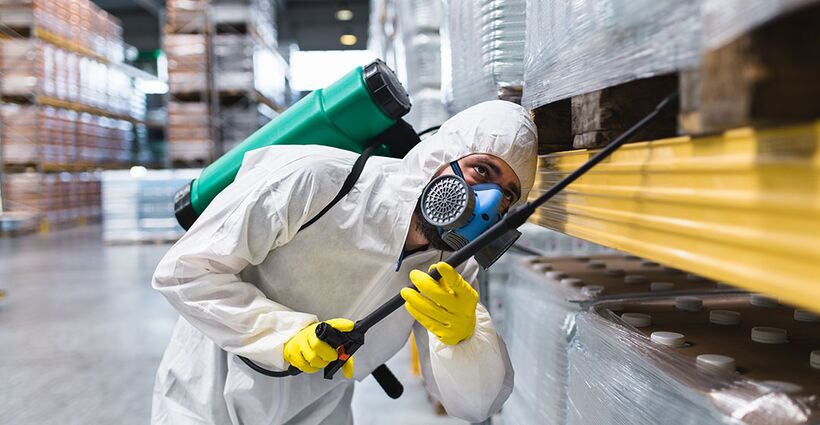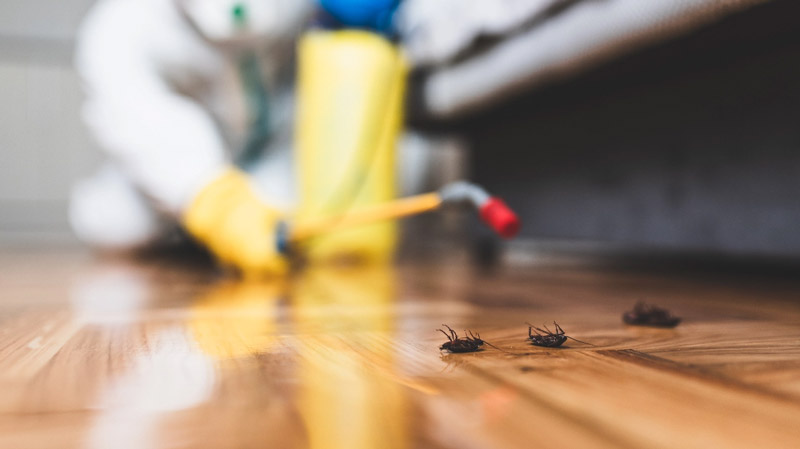Fast and Efficient Pest Removal Services with Pest Control Lockhart
Fast and Efficient Pest Removal Services with Pest Control Lockhart
Blog Article
Discovering Infestation and Treatment Methods on the planet of Insect Control
The landscape of insect control encompasses a myriad of challenges, especially as infestations of usual household pests proceed to progress. By incorporating preventative measures with sophisticated monitoring methods, such as Integrated Bug Management (IPM), home owners can better secure their environments.

Typical Household Pests
When it comes to handling our home, recognizing common household insects is vital. These parasites not just interrupt our convenience yet can also pose health risks and damage home. One of the most common house parasites consist of ants, roaches, rats, termites, and bed insects.
Ants, usually seen foraging in cooking areas, can infect food and develop large colonies. Roaches, understood for their resilience, can trigger allergic reactions and spread virus. Rats, consisting of mice and rats, can cause structural damages and lug conditions like hantavirus and salmonella. Termites, frequently referred to as "quiet destroyers," can jeopardize the stability of wooden structures, bring about pricey repair services. Bed insects, although not disease carriers, can create considerable discomfort through their attacks and cause mental distress.
Recognizing the indicators of these bugs, such as droppings, nests, or bite marks, is essential for very early intervention (Pest Control Lockhart). Proper cleanliness practices, securing entry factors, and preserving a clutter-free setting are efficient preventative measures. By recognizing these usual house pests and comprehending their behaviors, home owners can take positive actions to reduce problems, guaranteeing a healthier living setting
Understanding Parasite Infestations
Insect problems can rise quickly, turning a minor inconvenience into a considerable problem if not dealt with quickly. Typical factors adding to problems consist of inadequate hygiene, architectural susceptabilities, and seasonal adjustments that drive pests indoors.
Identifying the sort of insect is vital, as various species exhibit varied habits and reproductive prices. For circumstances, rodents might establish nests in hidden locations while pests like roaches grow in wet settings. Early discovery commonly pivots on acknowledging indications such as droppings, nibble marks, or unusual sounds, which can show an issue before it becomes extreme.
Ecological conditions also play a vital role in pest proliferation. Cozy, moist environments can promote the fast development of pest populations, while adjustments in landscape design or building can accidentally develop helpful environments. As a result, normal examinations and preventative measures are paramount to mitigating the risk of infestations. An educated strategy to understanding these characteristics prepares for effective insect administration methods in the future.
Treatment Techniques and Strategies
Effective treatment methods and methods are essential for reducing bug problems and restoring a risk-free atmosphere. A complex approach is typically best, including chemical, biological, and mechanical techniques tailored to the certain parasite and the severity of the infestation.
Chemical treatments include making use of pesticides and herbicides, which can properly remove pests. However, appropriate application and adherence to security guidelines are vital to decrease threats to humans and non-target organisms. Integrated Bug Management (IPM) motivates the cautious use chemicals as a last hope, depending rather on tracking and threshold levels to identify intervention needs.
Organic control techniques involve presenting all-natural killers or parasites to reduce parasite populations. This method is significantly preferred, especially in farming settings, why not try here as it advertises environmental sustainability.
Mechanical approaches, such as catches and barriers, supply immediate alleviation from parasites without introducing chemicals. Alternatives include helpful site sticky catches for pests or physical barriers for rats.
Eventually, the choice of therapy method must consider the details insect, the setting, and prospective effect on human health and wellness and communities. A well balanced combination of these methods can efficiently handle infestations while advertising lasting insect control remedies.
Preventive Procedures for Homes
Proactively attending to parasite problems before they rise is important for preserving a healthy and balanced home environment (Pest Control Lockhart). Carrying out reliable preventive procedures can significantly lower the chance of infestations, eventually securing both your residential or commercial property and wellness

Proper landscaping also plays a critical function in prevention. Keeping bushes and trees trimmed away from your home lowers the chances of bugs locating their means indoors. Moreover, ensure that water drainage systems are working successfully to stop standing water, which go to website can reel in insects and other bugs.
Last but not least, regular assessments are recommended. Frequently inspecting for signs of parasite task allows for early intervention. By taking on these precautionary steps, homeowners can develop an atmosphere that is less friendly to insects, thereby boosting their general high quality of life and reducing the requirement for comprehensive parasite control interventions.
Business Bug Control Strategies
A thorough method to business insect control is essential for services aiming to preserve a safe and hygienic setting. Effective approaches involve a mix of normal examinations, employee training, and the execution of Integrated Parasite Monitoring (IPM) practices.
Routine inspections allow very early discovery of parasite task, allowing for timely treatment. Businesses must create a routine schedule for these evaluations, concentrating on high-risk areas such as cooking areas, storeroom, and garbage disposal websites. Employee training is equally vital; team should be enlightened on the signs of bug problems and the importance of reporting them right away.
Carrying out IPM techniques helps reduce insect problems sustainably. This consists of habitat modification, such as sealing entrance points and minimizing mess, along with using all-natural deterrents prior to considering chemical treatments.

Moreover, working together with an accredited bug control service provider guarantees access to expert knowledge and advanced treatment choices. This partnership can cause tailored pest control plans customized to the certain needs of the service, reducing threats and improving general efficiency. Eventually, a positive and educated strategy fosters a pest-free atmosphere, securing both public wellness and organization track record.
Verdict
In conclusion, effective parasite control necessitates a detailed understanding of common home insects and their behaviors, coupled with targeted treatment methods. Implementing preventative actions alongside treatment approaches such as Integrated Pest Monitoring and organic control enhances the capability to mitigate invasions.
Report this page